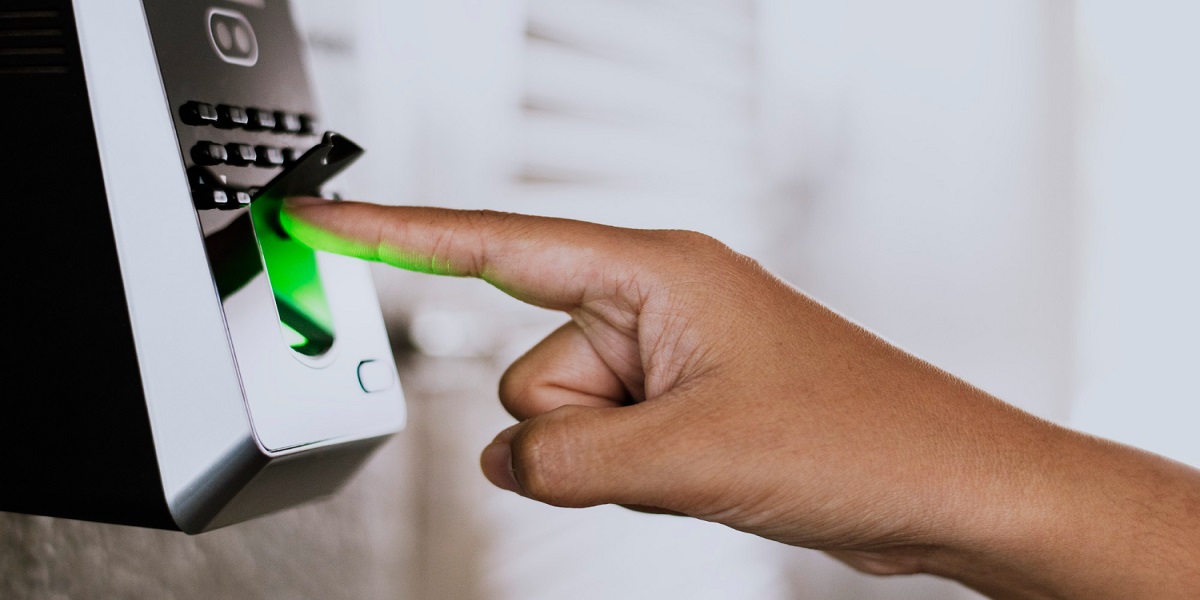
Biometric Authentication System: Keep Your Business Secure and Crime-Free
- By Alex Petter
- 01-11-2023
- Technology
Companies are tired of utilizing traditional means of validation, which only takes their effort and is not supporting them in the manner they want to. Business platforms are in search of an automated method through which they can easily complete their client’s verification processes within a matter of seconds and with less manual effort. Through biometric identification, many legal companies are securing themselves from terrorism, drug trafficking, and forged transactions. The average market value for biometrics in 2022 was 28 billion dollars which is expected to increase on a larger level a few years later.
The escalating importance of biometrics highlights the pivotal role that digital authentication plays in the landscape of legal businesses. As technology advances, biometric authentication emerges as a next-level solution to counteract the growing threats of fraud and criminal attacks. Recognizing the imperative nature of these advancements, legal businesses are encouraged to integrate biometric authentication systems to fortify their security measures and pave the way for a more robust and secure future. In this blog, we will delve deeper into the industries that biometric authentication targets, exploring how these innovative systems contribute to societal value and elevate the security standards of legal enterprises.
Biometric User Authentication
The ubiquity of biometric authentication systems extends across diverse legal landscapes, including banks, workplaces, universities, and court settings. These institutions have increasingly adopted biometrics to fortify their security infrastructure, recognizing the advanced protection it offers. Beyond security enhancements, the utilization of biometric authentication serves the crucial function of maintaining meticulous customer records. By requiring unique biological markers for access, these systems act as stringent gatekeepers, mitigating the risk of unauthorized entry. In doing so, biometric authentication not only heightens security measures but also establishes a robust safeguard against potential breaches, ensuring the integrity and confidentiality of sensitive environments.
Biometrics Across Industries
The versatility of biometric authentication makes it applicable across diverse industries. In the banking sector, it plays a pivotal role in securing financial transactions and preventing unauthorized access to accounts. Workspaces leverage biometrics to enhance employee and visitor management, promoting a secure and efficient environment. Educational institutions use biometric systems for attendance tracking, ensuring accurate and tamper-proof records. The legal sector benefits from biometrics in controlling access to confidential information and maintaining the integrity of sensitive areas.
Understanding Biometric Authentication
Biometric authentication, characterized by the use of unique physical or behavioral traits for identification, has emerged as a robust security measure. From fingerprints and facial recognition to retina scans, this technology ensures that access to sensitive areas is granted only to authorized individuals, significantly reducing the risk of unauthorized entry.
In What Terms Biometric Security System is Unique?
Biometric recognition stands out for its ability to detect a spectrum of unique features, including facial expressions, fingerprints, voices, and vein patterns—attributes often challenging for the human eye to discern easily. Unlike traditional manual verification systems, biometrics can store a wealth of intricate physical characteristics, enhancing accuracy and security. This technological advancement poses a significant challenge for scammers worldwide, as the complexity and uniqueness of biometric data make identity replication nearly impossible.
In addition to thwarting fraudulent activities, companies can leverage biometric verifications to streamline digital onboarding processes. The integration of biometric authentication in onboarding procedures enhances the efficiency of identity verification, providing a seamless and secure experience for both businesses and users. As technology continues to evolve, the multifaceted capabilities of biometric recognition not only bolster security measures but also contribute to the evolution of digital identity management, offering a robust solution against the ever-growing threats in the digital landscape.
In traditional methods of verification, companies send confirmation emails, codes, and passwords to customers for their verification procedures. But there were more chances of forged passcodes or pin codes stolen by scammers. Now, with advanced Biometric authentication, the fantasies are turned into reality. Clients are provided with Biometric IDs, that are used to give a specific identity to a person. After this process, the person will be easily verified without the chance of getting their biometrics stolen by an illegitimate person.
Combatting Fraud and Criminal Activities
One of the most compelling aspects of biometric authentication is its efficacy in combatting fraud and criminal activities. Traditional methods of identification, such as passwords or ID cards, can be compromised. Biometric data, on the other hand, is unique to each individual and significantly more challenging to forge. This inherent security feature acts as a formidable deterrent, keeping fraudsters at bay and safeguarding your business from potential threats.
By embracing this cutting-edge technology, you fortify your operations, combat crime, and create a workplace that prioritizes both security and efficiency. As the digital landscape evolves, the role of biometric authentication in securing businesses is set to become even more prominent. Stay ahead of the curve, and ensure that your business remains secure, crime-free, and ready for the challenges of tomorrow.
Globally Used Biometric Recognition
The widespread adoption of biometric recognition on a global scale is attributed to its multifaceted layers of privacy assurance. Legal entities across the world extensively employ biometric identification, finding solace in its advanced security features. Businesses, irrespective of geographical location, prioritize the integration of biometric authentication into their systems as a means to enhance safety and instill a greater sense of comfort. This technology not only fortifies security measures but also aligns with the evolving landscape of privacy concerns, making it a preferred choice for legal companies aiming to safeguard sensitive information and bolster overall data protection standards.
Streamlining Operations and Enhancing Productivity
Beyond security enhancements, the implementation of biometric authentication can streamline business operations. By automating the identification process, businesses can reduce reliance on manual verification methods. In the past, the cumbersome task of recording employee entries fell on the shoulders of security personnel. With biometrics, this process becomes seamless, freeing up valuable time and resources. This increased efficiency translates into enhanced productivity levels for your business.
Addressing Privacy Concerns
The widespread adoption of biometric authentication brings about undeniable benefits in terms of security and operational efficiency. However, as businesses delve into this innovative realm, it becomes imperative to address the significant privacy concerns associated with the collection and storage of biometric data.
First and foremost, businesses must prioritize transparency in their approach to biometric data. This involves adopting clear and comprehensible policies that explicitly detail how biometric information is collected, processed, and stored. Communicating these policies to both employees and customers is essential in establishing trust and ensuring informed consent. By providing a transparent framework, businesses not only comply with ethical standards but also foster a culture of openness regarding the handling of sensitive personal information.
Implementation Strategies for Businesses
Integrating a biometric authentication system into your business requires careful planning and execution. From assessing the specific needs of your organization to selecting the right biometric technologies, a strategic approach is essential. Employee training on the proper use of biometric systems and ongoing system maintenance contribute to the long-term success of the implementation.
Building trust is paramount in the successful implementation of biometric authentication systems. Ensuring that individuals understand the purpose, methods, and safeguards in place for their biometric data engenders a sense of security. Businesses that prioritize privacy considerations not only meet regulatory requirements but also position themselves as responsible stewards of sensitive information, fostering a positive and trusting relationship with their stakeholders.
Case Studies: Success Stories of Biometric Integration
Several businesses across various industries have successfully integrated biometric authentication systems, showcasing the tangible benefits of this advanced technology. These real-world examples highlight how organizations have overcome security challenges, enhanced operational efficiency, and created safer environments for both employees and clients.
The successful integration of biometric systems has not only addressed security concerns but has also proven instrumental in improving operational processes, reducing risks, and fostering safer environments for employees and clients alike. As technology continues to evolve, these real-world cases serve as valuable insights into the transformative impact of biometric authentication in various organizational contexts.
Impact of Biometric ID Verification on Industries
Biometric user identification extends its services across a spectrum of industries, providing versatile applications in banking, cryptocurrency, workspaces, educational institutions, and bureaucratic organizations. Its adaptability and reliability make it a valuable asset in diverse sectors, ensuring secure and efficient user authentication. From safeguarding financial transactions in banking to enhancing security measures in cryptocurrency, and from streamlining access in workspaces to providing secure identification in educational and bureaucratic settings, biometric technology serves as a universal solution for reliable and robust user authentication across various domains. Its widespread implementation underscores its effectiveness in meeting the unique needs and security requirements of different industries.
-
ATM Banking
Biometric authentication has become integral to ATM banking, with the banking industry employing advanced security systems to enhance account verification processes. When customers seek to open accounts, the banking sector relies on biometric data such as palm prints or fingerprints for validation. This robust authentication method not only ensures the secure identification of customers but also grants them convenient access to their financial accounts. By incorporating biometric technology into ATM systems, banks aim to strengthen security measures, mitigate the risk of unauthorized access, and provide customers with a seamless and reliable means of managing their finances. The utilization of biometrics in banking exemplifies the industry's commitment to employing cutting-edge solutions for both security enhancement and user convenience.
-
Biometrics at Workspaces
Biometric identification is increasingly employed in workspaces to create a safer environment for employees and students. Utilizing biometrics for customer validation not only enhances security but also streamlines operational efficiency, reducing the workload on security personnel and boosting productivity. In the past, before the advent of digital verification systems, the manual recording of employee entries was a complex and time-consuming task for guards. With biometric authentication, this cumbersome process is alleviated, allowing for seamless and automated identification of individuals entering the premises. The integration of biometrics not only enhances security protocols but also demonstrates a commitment to modern, efficient practices, ultimately optimizing the overall functioning of workspaces.
It keeps the illegitimate people away from the businesses and institutes. Implementing biometric authentication gives companies an advantage over checking the workers again and again. Because this system provides a continuous detection system where there is no need for manual efforts.
-
Mobile Industry
The prevalence of biometric identification systems has surged in smartphones, where individuals utilize biometric authentication as a secure means to lock their devices and applications. Incorporating retina, facial, and fingerprint identifiers, biometrics has significantly simplified daily lives compared to traditional security methods. Now, users can seamlessly unlock their smartphones and access applications with a quick and secure verification process. The integration of biometric technology in smartphones not only enhances security but also reflects a user-centric approach, providing a convenient and efficient way for individuals to safeguard their personal data. This shift towards biometric authentication signifies a broader trend in technology, emphasizing the importance of user-friendly, yet robust, security measures in the ever-evolving landscape of mobile devices.
-
Legal Courts
Authorities with legitimate access control concerns have integrated biometric authentication solutions at their entrance gates. This strategic implementation serves as a formidable deterrent against unauthorized access attempts by potential criminals seeking entry into the organization. By leveraging biometrics, such as fingerprints, facial recognition, or other unique identifiers, these security measures bolster the organization's defenses and ensure that only authorized personnel can enter. This proactive use of biometric authentication not only fortifies physical security but also contributes to a more comprehensive and sophisticated approach in safeguarding sensitive areas, minimizing the risk of unauthorized individuals gaining access without proper permission.
Conclusion
The imperative adoption of a biometric authentication system is paramount for legal authorities committed to steering clear of criminal involvement. This advanced technology serves as a robust deterrent, effectively keeping fraudsters at bay and fortifying organizational security. Biometric identification processes, leveraging features like fingerprints or facial recognition, stand out for their unparalleled speed, reliability, and efficacy compared to traditional manual verification methods. Beyond the immediate benefits of enhanced security, the biometric authentication system acts as a shield, safeguarding businesses from potential hefty fines and future threats by ensuring that only authorized individuals gain access. Its proactive implementation not only strengthens the present security landscape but also establishes a resilient defense against evolving risks and criminal activities, thereby preserving the integrity of legal authorities.
Recent blog

How NASA Uses Web Design to Optimize User Experience in Space Control
Web Design | 03-05-2024
Content that Converts: Digital Marketing Tactics for E-Commerce Success
E-commerce | 02-05-2024.png)




